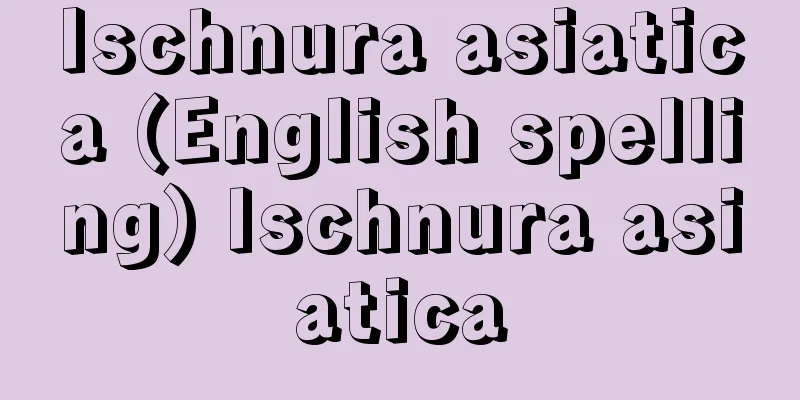Tarsonemid mite

|
A general term for minute mites in the family Tarsonemidae, order Acarina, class Arthropoda. Body length is 0.1-0.3 mm. Sexual dimorphism is evident; the female's fourth leg is extremely thin and has two whip-like hairs at the end. Males are small, with the fourth leg being particularly thick, curving inwards and ending in a distinctive claw. Females have spiracles on the anterior dorsal side of the anterior body, but males lack a tracheal system. Tarsonemid development does not include a nymph stage. Females lay opaque white eggs that are large in proportion to their body size. The larvae (6 legs) that hatch from the eggs undergo a resting period, molt and immediately become adults (8 legs). The adult body color is diverse; the herbivorous species are green, while the fungivorous species are the color of the fungus they eat. Females use all eight legs for walking, but the male's fourth leg is functionally a reproductive appendage, used to grasp, transport and mate with resting females or adult females. Many species of Tarsus mites parasitize plants, and some species are problematic agricultural pests. The cyclamen mites are pests that parasitize the leaves, buds, and bulbs of cyclamen. They cause great damage to flowers grown in greenhouses. They also infest strawberries grown outdoors. The tea mites parasitize the new leaves of many crops, including tea, citrus fruits, watermelon, eggplant, and peppers, stopping their growth. There are also species that feed on fungi, algae, and animals. [Mori Fansu] Source: Shogakukan Encyclopedia Nipponica About Encyclopedia Nipponica Information | Legend |
|
節足動物門クモ形綱ダニ目ホコリダニ科Tarsonemidaeの微小なダニの総称。体長は0.1~0.3ミリメートル。雌雄間の性的二形が顕著で、雌の第4脚(きゃく)はきわめて細く、末端に2本の鞭(むち)状の毛をもつ。雄は小形で、第4脚はとくに太く、内側に湾曲して末端に特異なつめがある。雌では前胴体部の前方背側面に気門が開口しているが、雄は気管系を欠いている。ホコリダニの発育環には若虫期を欠いている。雌は体のわりに大きな白色不透明な卵を産む。卵から孵化(ふか)した幼虫(6脚)は静止期を経て脱皮してただちに成虫(8脚)になる。成虫の体色は多様で、食植性の種類では緑に、食菌性の種類では食べた菌の色になる。雌は8脚全部を歩行に使うが、雄の第4脚は機能上は生殖用の付属肢であって、静止期の雌や雌成虫を把握し、運搬あるいは交尾のために使用する。 ホコリダニ科には植物寄生性の種類が多く、農業害虫として問題になる種類がある。シクラメンホコリダニはシクラメンの葉、つぼみ、球根に寄生する害虫。温室栽培の花卉(かき)に被害が大きい。露地のイチゴも加害する。チャノホコリダニはチャ、柑橘(かんきつ)類、スイカ、ナス、ピーマンなど多くの作物の新葉に寄生してその成長を止める。そのほか、食菌性、食藻性、動物寄生性の種類もある。 [森 樊須] 出典 小学館 日本大百科全書(ニッポニカ)日本大百科全書(ニッポニカ)について 情報 | 凡例 |
<<: Nikolay Nikolaevich Bogolyubov
Recommend
Jooss - Kurt Jooss
German dancer and choreographer. Born in Wasseral...
Usa [city] - Usa
A city in the north of Oita Prefecture. It was inc...
CR - Creation
A control character that means a carriage return. ...
Referred pain
...It is this connection that makes us cry when w...
Fujii Minoru
1880-1963 A track and field athlete from the Meij...
Tadakage Ada
Year of birth: Year of birth and death unknown. A ...
Freshly made sake - Kiippon
〘 noun 〙① Pure and unadulterated. Also, the thing ...
Acta Sanctorum (lives of saints)
Documents that record the words, deeds, and lives ...
Masamune Hakucho
Novelist, playwright, and critic. Born on March 3...
Mother of Presidents
…The northeastern part of the state is adjacent t...
Namboodiripad
Indian communist and politician. He began by joini...
Catazone
…A.F. Buddington (1959) argued that there is a cl...
engraving
… [Katori Tadahiko] [Western] In the West, engrav...
Victoria [State] - Victoria
A state in the southeast of Australia. The Austral...
Revolutionary Oproite - Revolutionary Oproite
… The year 1917, when the revolution broke out in...









